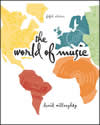Chapter 3 Vocabulary for Listening and Understanding: The Elements of Music Words and symbols sufficient to improve listening skills, formulate opinions, and communicate effectively Terms and concepts presented are not intended to be totally absorbed early in the course. The vocabulary will be used at successively higher levels of sophistication as the course progresses, and additional terms and concepts are presented as needed at appropriate places throughout the book. The strategy was to select a non-biased vocabulary, one that was not exclusively related to Western European music—thus little attention has been given to musical notation. Emphasis is placed not only on learning the elements of music but on how these elements work together to create style. Terms and concepts have been used that apply to the greatest variety of musical styles and that contribute to the development of music listening, rather than to the development of music reading skills. Melody and harmony are presented, respectively, as horizontal and vertical sounds. This symbolizes the point that not all music is melodic or harmonic as we usually know these terms. Much contemporary classical music involving disjunct melodies (melodies that are not tuneful or easily singable) causes us to redefine or rethink the nature of melody or to use different terms to describe consecutive arrangements of pitches. The emphasis in much contemporary music, as well as in many world music styles, is placed not on melodic patterns but on timbre or rhythm. Melody, as it is usually defined, frequently is nonexistent or plays a subordinate role. While much contemporary classical music can have harmony, its emphasis is not on traditional chords and chord progressions. A new terminology has evolved to describe some of these sonorities (tone clusters, quartal harmony, etc.). Traditional harmonic chord progressions are derived from Western European musical traditions. Many world music styles do not rely on chords as we define them; their simultaneous sounds are the by-products of multiple layers of sound that may be melodic or rhythmic rather than harmonic. Rhythm permeates all styles. It is presented as a manner of organizing the duration of sounds in a way that generates a rhythmic force, an energy ¾
the rhythmic impulse. Goals for Listening - Describe melodic character and range
- Identify elements of rhythmic organization
- Recognize concepts of chord progressions
- Describe differences in vocal and instrumental sounds
- Recognize and describe basic elements of musical structure
| 


 2003 McGraw-Hill Higher Education
2003 McGraw-Hill Higher Education